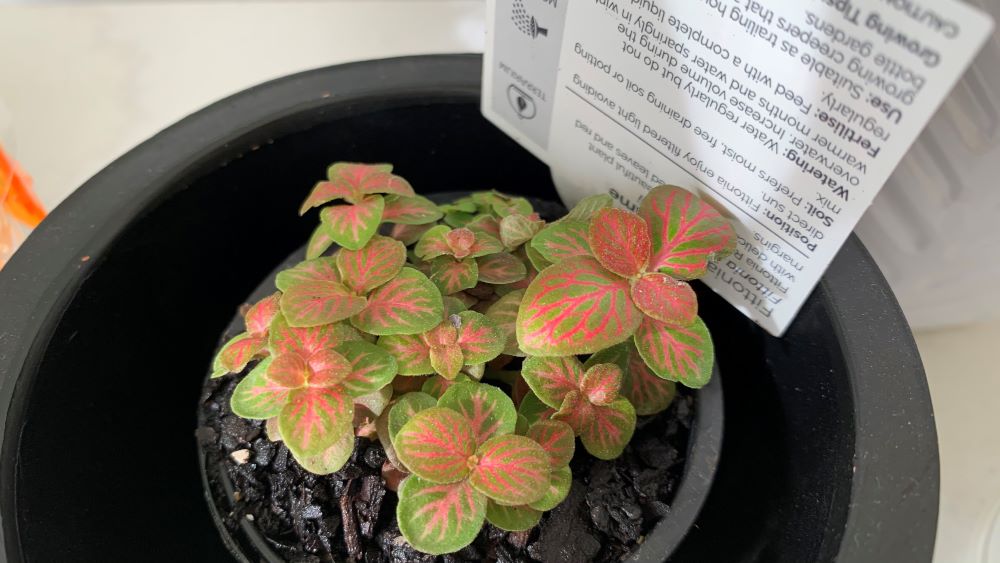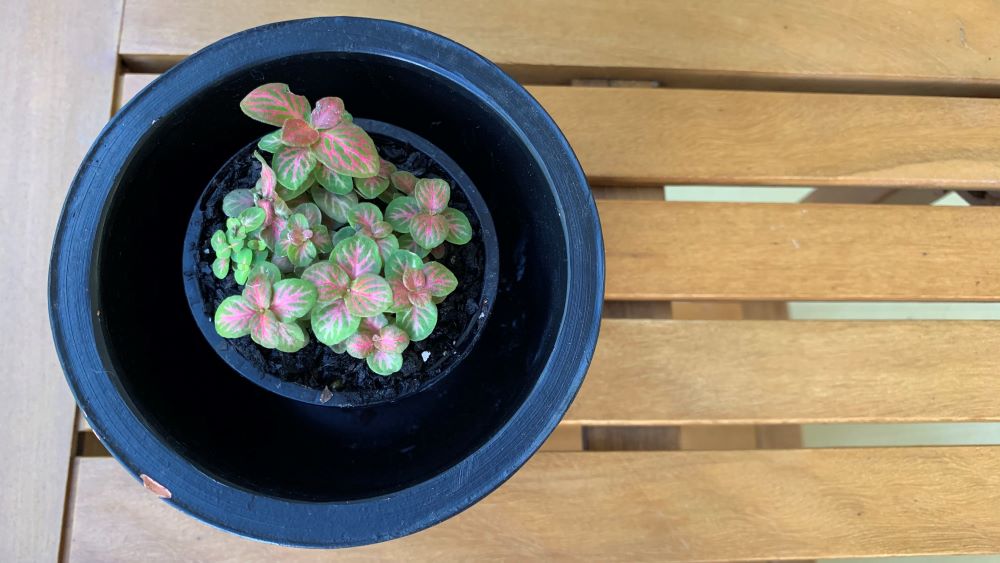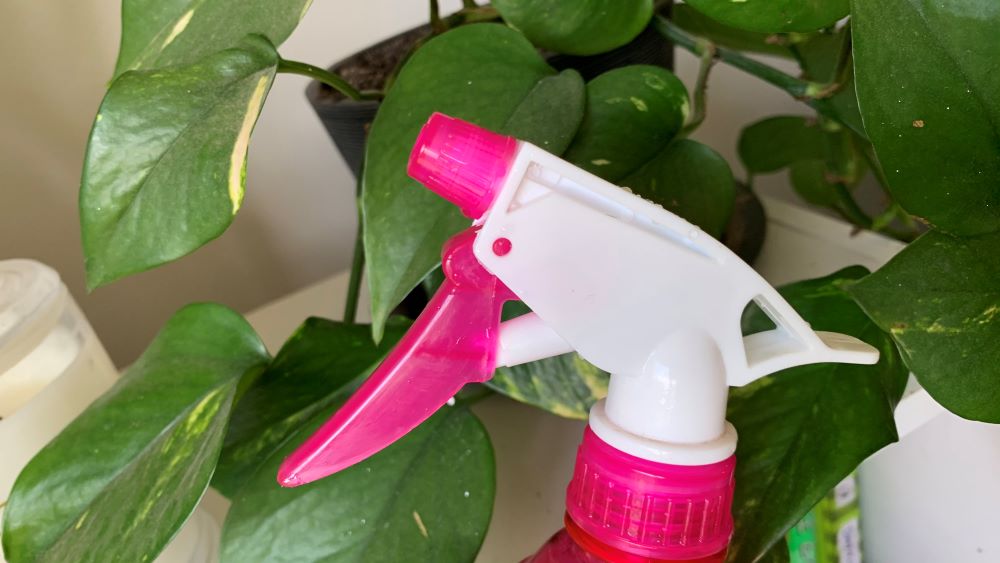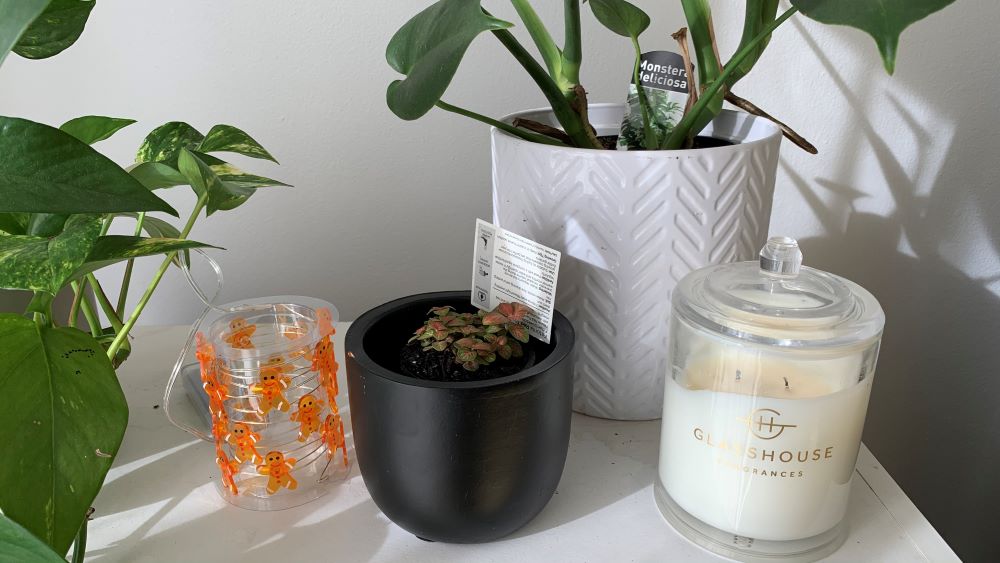Nerve plants or Fittonia love humidity levels above 50%. Increase the humidity levels by using a humidifier, misting the plants regularly and create a tropical microclimate using other plants. Grouping nerve plants together with other tropical plants including palms, monstera and pothos can help to trap and increase humidity levels.
This article will give you the complete guide for providing the right humidity levels for your nerve plant for healthy growth.

We’re an affiliate!
We hope you love the products we recommend. If you click we may collect a share of sales on this page. Thank you if you use our links, we really appreciate it!
Humidity and nerve plants
Nerve plants love higher humidity levels. These are tropical plants that originally were growing among a range of plants in a rainforest. Rainforests are typically higher in humidity, trap the moisture and create deep shade for smaller ground growing plants like nerve plants.
This means that for a healthy nerve plant at home, mirroring tropical conditions will give you fast, healthy leaf growth and a dense nerve plant.
The perfect humidity levels for nerve plants
Nerve plants love higher humidity levels anywhere from 50-99% humidity. Tropical or subtropical areas will naturally have humidity levels above this which is perfect for nerve plants.
Indoor nerve plants in airconditioned houses can suffer from the dryer air so you may need to try one of my 5 steps below to increase humidity for nerve plants.

Creating tropical conditions for nerve plants
Creating a tropical climate for nerve plant at home means you will be giving the plant lots of protection and shade, filtered light, humidity and moist soil. This can be done using easy methods like misting, regularly watering the soil positioning the plant among other tropical plants and keeping them away from direct light.
How to increase humidity for nerve plants – 5 Easy ways
Here are my top 5 easy ways to increase humidity at home for your nerve plant.
1. Misting
Misting nerve plants is the easiest way to temporarily increase humidity for nerve plant. Squirting your nerve plant with mist setting on your sprayer bottle will increase the humidity around the plant for a short time.
Sprayer bottles are usually less than $5 to buy and are an easy way to create a tropical feel for your plant.
Mist your nerve plants every 2-3 days to increase the humidity levels.
It is best to mist your nerve plants in the morning. This gives the plant time to dry out as the day goes on an reduces the risk of fungus growth. If you spray at night, the water can sit on the leaves for longer and may cause damage.

2. Microclimates with other plants
Creating a microclimate by grouping your tropical plants together. Plants will help to trap moisture, will capture the water released by the plants or transpired and help to increase humidity.
I like to group my nerve plants with my new ficus, monstera and pothos. This creates a tiny rainforest on my bookshelf and helps to increase humidity for all plants.

3. Regular watering
Regular watering and keeping the soil moist will help to increase the humidity around the plant. The water will evaporate into the air around the plant as well as keeping the roots moist. Nerve plants like moist soil and will start to droop if the soil dries out too much.
4. Inside and bathrooms
Keep nerve plants indoors into a space that is naturally higher in humidity for a happy nerve plant. For most of us, nerve plants will be kept indoors so choose a bathroom window as these are naturally more humid rooms.
You could also consider putting your nerve plant in your laundry. Driers create humidity and your nerve plant will be happy in this environment near a window. Just remember to water them!
5. Humidifier
Another easy way to increase humidity for your indoor tropical nerve plant is to use a humidifier. Plant humidifiers will help to increase the humidity levels above 50% and can be essential if you live in a very cold, dry climate.
Start with a small humidifier and place it near your grouped tropical plants. All of them will benefit from the extra humidity and will help tropical plants to grow faster.
Check out plant humidifers here on Amazon.

How to know if humidity levels are too low for nerve plants
There can be some easy signs to look for to tell that humidity levels are too low for nerve plants.
Drooping leaves
Drooping leaves can be a sign that the humidity levels are too low for nerve plants. As moisture levels drop in the soil or air the leaves will droop. Watering the nerve plant is a great start but try misting each morning for a few days to see if this helps the leaves to stand up.
Browning leaves
Browning leaves can be a sign that the humidity levels are too low for nerve plants. This is a sign that the plant is too dry so spray the plant to increase humidity and moisture levels.
To increase humidity levels in the longer term think about moving your nerve plant into your bathroom or place it among other plants that get regular water like pothos to create a higher humidity microclimate.
Humidity for Nerve plants (Fittonia) | Summary
Nerve plants will grow best if the humidity levels are kept above 50% for most of the year. Warm, tropical summers are the nerve plants’ favorite time to grow so transplant nerve plants in spring ready for rapid growth.
Try a humidifier if you live in a cooler, dry climate or mist the plants in the morning every 2-3 days. Fittonia or nerve plants are easy to grow and when they are large enough they can be split into multiple plants.
Happy growing.
I am an accredited practicing dietitian, experienced gardener and a dedicated cook. I love writing and sharing my experience so you can learn from my successes and mistakes.
